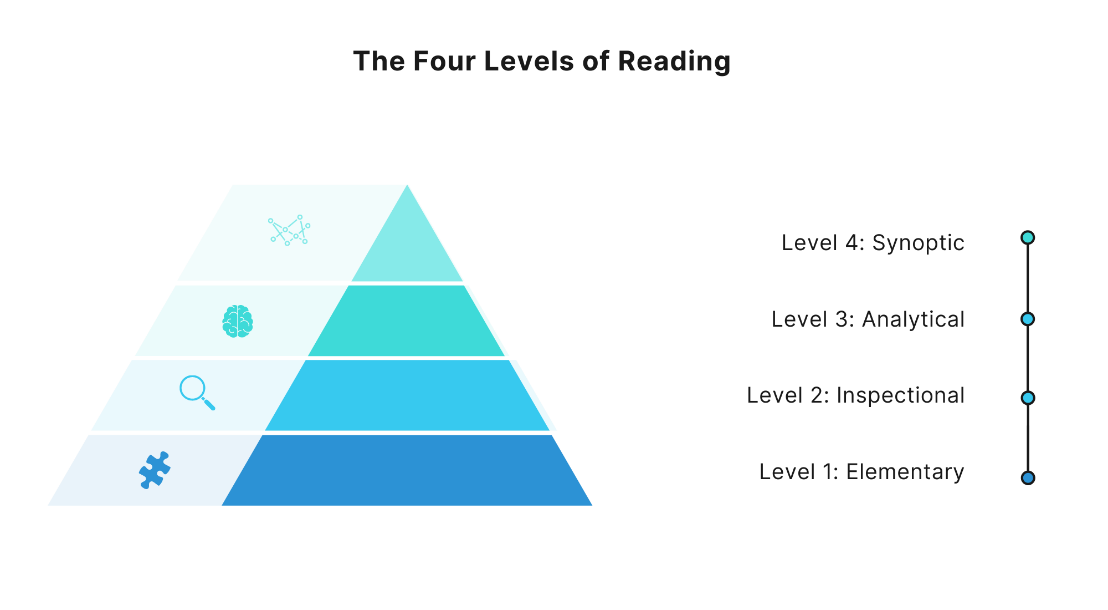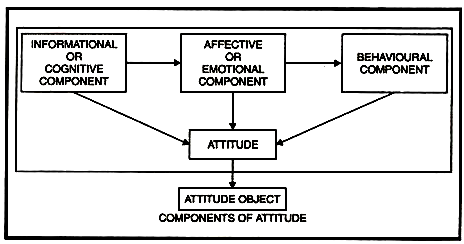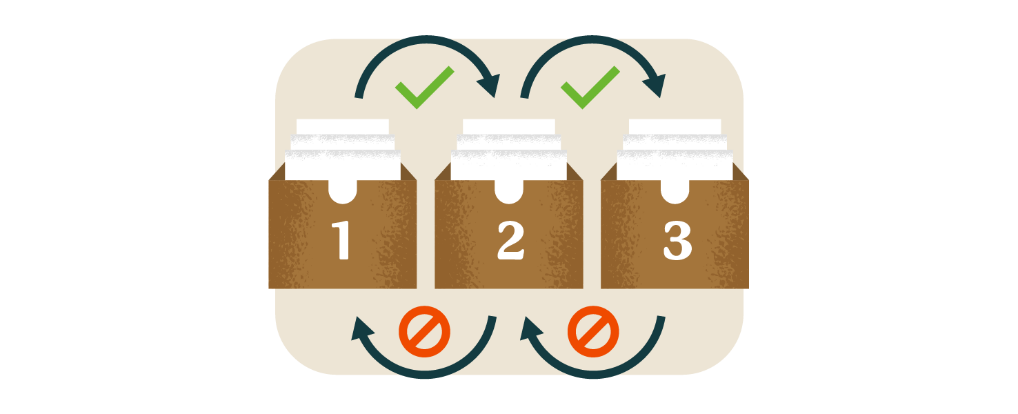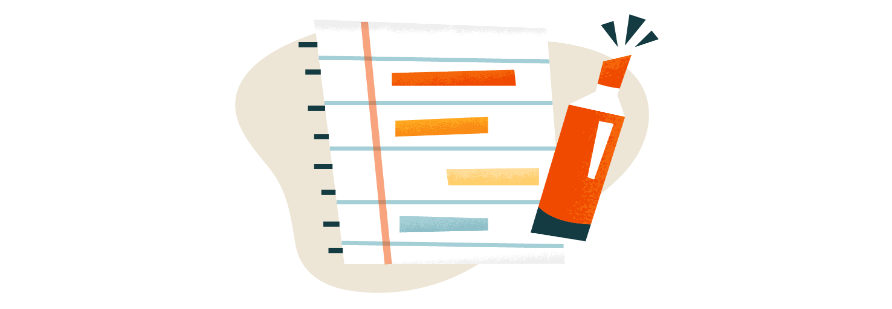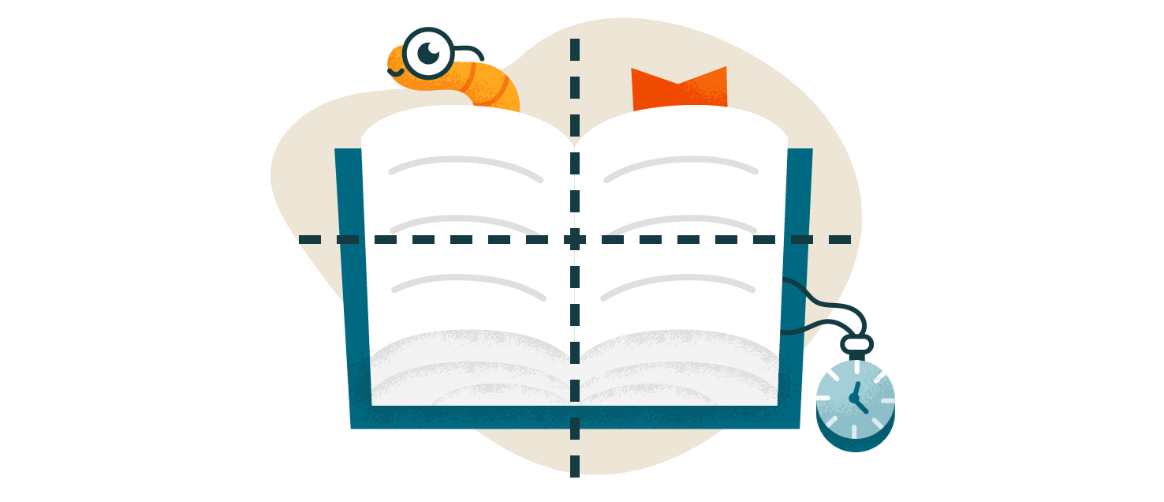Apprendre des leçons de vie : 2e partieBulletin de pratique en matière de WHEC et directives cliniques de gestion pour les fournisseurs de soins de santé. Subvention à l'éducation fournie par la santé des femmes et de l'éducation Center (WHEC). A Resource and Practical Guide for Teachers, Students and Administrators (Schools and Universities) for Planning Programs for Youth Development The Women’s Health and Education Center (WHEC) - A Community-based Advocacy Charity for people worldwide, and a United Nations ECOSOC-accredited non-governmental organization (NGO in Special Consultative Status, since 2008), highlights the importance of advocacy projects / programs, and importance of partnership. Mental health governs so much of our lives, and we must give it the attention and care that it requires in order to improve quality of life and social-emotional wellbeing. Each new-generation of children faces challenges, but those being delt with by today's youth seem particularly daunting. Children at an early age are confronted by situations that require decision-making skills for preventive actions. Mental health programs in school and universities are essential. The purpose of this document is to teach these skills launched for Sustainable Development Goals (SDGs) 3, 4, 5: Learning Life Lessons Series. These so-called Life-Lessons include decision-making, problem-solving, critical thinking, self-esteem, communication, self-assessment and coping strategies. People with such skills are more likely to adopt a healthy lifestyles. Part II addresses these three chapters: 5) Reading effectively; 6) Attitudes and Behaviors for Success; 7) Studying Tips. CHAPTER V - READING EFFECTIVELYBooks have an enormous impact on our lives. Reading more effectively and efficiently means developing a watertight process to capture ideas, analyze arguments, and ask the right questions. It means identifying the right books to read, understanding the different reading goals, and using evidence-based techniques to increase reading productivity. In many ways, improving the way we read is the number one skill that can change our lives for the better. Books act as a personal mentor, and as a vehicle for compounding knowledge. Increasing our ability to read more effectively, as a means to unlock our own personal potential, begins by deciding on a reading goal. After all, we are probably going to have a different objective and experience reading various books. It is easier and more useful for our purposes to segment reading objectives into three distinct categories: Category 1: Reading to Entertain. In this category, we read books purely for enjoyment. It is how we spend majority of our time as readers. There are no rules and there is no need to think too deeply or critically about what we are reading. The goal is simple - we can relax and immerse ourselves in the story. Category 2: Reading to Inform. In this second category, we read books to learn specific facts or information about something. These books are easy to navigate and simple in their layout and structure. The goal is to learn without judgment. For most of us, reading to inform is not too problematic. Category 3: Reading to Understand. In this category - reading to understand - that most of us tend to struggle with. It therefore deserves most of our attention when it comes to improving the efficiency and effectiveness of our reading. it requires the greatest cognitive effort. It forces us to challenge our preconceptions, critically analyze the status quo, and directly confront ideas that we may not be immediately comfortable with. This is hard. It can be uncomfortable. But it is the only way for us to level-up our thinking and personal growth. Therefore, we need a method that takes us from reading at an elementary level to reading at an analytical or synoptical level. The Four Levels of Reading These levels are devised by Mortimer Adler and operate to help us understand a book at a far deeper level than most of us are used to.
Figure 1. The Four Levels of Reading. While the three categories of reading help guide our reading goal, the four cumulative levels of reading help guild our reading style. Level I: Elementary Reading The first level of reading is the style of reading that everyone knows how to do. As it is what we are taught in school. As an elementary reader we can easily understand the words on the page, follow the plot, and have a solid grasp of what the book is trying to say. We should try and first improve our reading level. Every book should be read no more slowly than it deserves, and no more quickly than you can read it with satisfaction and comprehension. Level 2: Inspectional Reading This second level of reading requires marginally more skill than at the elementary reading level. As an inspectional reader we are tasked with unearthing the overall framework of the book and mapping out the general picture the author is trying to paint. The idea is that we are making some preliminary calculations about the book’s content and worth before delving into it properly. There are two types of inspectional reading: systematic skimming and superficial reading. Systematic Skimming: with this our aim is to decide whether or not this is a book we actually want to spend the time reading. We flip through the book concentrating on each chapter’s introduction, conclusion, and any sub-headings that interest us. In other words, we do a surface level examination of the book before writing a couple of sentences that neatly summarizes everything. Another way to systematically skim a book is by reading a book summary. Superficial Reading: the objective of superficial reading is to quickly read the book without stopping to reflect or analyze. Speed reading is not a problem here, as we are not reading to understand, but seeing if it is interesting enough to continue onwards to level 3. A quick note - sometimes, a book might be really good, but we have just encountered it at the wrong time. That is okay. We do not have to read it if we do not find it interesting right now. We can always come back to it later. Level 3: Analytical Reading This level of reading is about examining the book-in depth. It involves discovering the book’s central meaning, evaluating the author’s arguments, and developing a thorough understanding of the book. However, perhaps the most critical component of analytic reading is continually questioning what we are being told. Specifically, there are three core questions that we should be asking when reading a book analytically. The Holistic Stage: What is the book about as a whole? We are tasked with identifying the questions the author is asking and trying to solve. Put another way, what was it the author was trying to answer by authoring this book? Think about how the structure and ideas flow in general, helping to guide us to the given conclusion. The Specific Stage: What is the book saying in detail and how it is being said? We need to ensure we have fully understood the author's approach and are comfortable with interpreting their thinking. In each chapter, the author will also make certain claims and propositions, which we should restate in our own words and decide whether or not their argument is strong. We should carefully evaluate how these claims and propositions are connected, and check to see they flow logically from one point to the next. The Veracity Stage: Is the book true, whether in whole or in part? Our task is to constructively analyze. To show where the author has been uninformed, misinformed, illogical or incomplete in their arguments, clearly explaining what the shortcomings are and how the author’s reasoning could be improved. If we cannot do that, then our criticism is unlikely to be constructive or valid. Level 4: Synoptical Reading: This final level of reading is about our understanding of a subject more generally. Whereas analytical reading focuses on our comprehension of a specific book, synoptical reading helps shape our opinion and increase our overall fluency of the wider topic through understanding how different books relate to one another. The first step is to begin by deciding the subject we want to tackle (e.g.; productivity or habit-formation). We can then draw up a bibliography of books on the topic, and select just a handful of them that we believe to be most relevant. Through synoptical reading we are connecting the best ideas on a subject, which acts as a powerful catalyst giving rise to creative solutions and real insight. It is truly game-changing (when we actually do it). KEY RULES TO EFFECTIVE READING
Seeking Help for a Struggling Dyslexic Reader As adults, we forget the struggle that came with learning one of the most important skills we need to succeed - READING. Reading is the foundation of all education. Struggling to read is extremely stressful and disheartening for young children or children with learning difficulties. Like learning any new skill, reading is involved and comes with its own set of challenges and frustrations. For dyslexic children in particular, reading is not a skill that comes naturally. It requires extra effort, motivation, and support from both the child and the parent. While some kids pick up reading easily, others struggle. What can we do to help? We suggest the following 5 ways to support the little readers with dyslexia. Suggested Reading Raising Emotionally and Physically Healthy Children by Debbie Elder Attitude is everything when it comes to achieving a goal, and tackling a setback or problem. Attitudes are evaluations of a particular person, group, action or thing. An attitude is focused on a particular entity or object, rather than all objects and situations with which it is related. In summary – attitudes are generally positive / negative views of a person (including oneself) place, thing or event. For example: Definition of Attitude in Psychology Allport (1935) defined attitude as "a mental and neutral state of readiness, organized through experience, and exerting a directive or dynamic influence upon the individual's response to all objects and situations with which it is related." Fishbein & Ajzen (1975) define an attitude as "a learned predisposition to respond in a consistently favorable or unfavorable manner with respect to a given object." Eagly & Chaiken (1993) defined "an attitude is a psychological tendency that is expressed by evaluating a particular entity with some degree of favor or disfavor." Hogg and Vaughan (2005) defined an attitude is "a relatively enduring organization of beliefs, feelings, and behavioral tendencies towards socially significant objects, groups, events or symbols." Attitude is something that lies between emotions and thought processing. It may be positive or negative. Formation of Attitudes in Psychology Attitudes are mostly acquired as result of various life experiences, influences by factors, such as: WHY ARE ATTITUDES IMPORTANT? Answering this question depends on understanding the relation of attitudes to behavior. The implications of this analysis can be summarized as set of three propositions that specify conditions under which attitudes play a powerful role in determining social behavior. CHARACTERISTICS OF ATTITIDES Attitudes differ in strength. Strong, central attitudes are referred to important attitude objects, which are strongly related to the self. These attitudes are often related to important values. Attitude strength involves five dimensions: COMPONENTS OF ATTITIDES Attitudes comprise of three basic components: Emotional, Informational and Behavioral. Figure 2. Components of attitudes: Informational or cognitive; Emotional; and Behavioral. KEY POINTS FOR POSITIVE ATTITUDES AND BEHAVIORS FOR SUCCESS Suggested Reading Social Psychology (8th edition) by D.G. Myers (2006); Tata McCraw-Hill Publication There is no getting around it: learning is hard. Gaining expertise require cognitive struggle, and learning is often a matter of mental doing. What this means is that people seeking expertise need support and encouragement, and so you should offer lots of praise to people learning something. Teachers - and parents - should also communicate rigorous norms and goals. Whether you are in high school, or an adult going back to college, balancing coursework with other responsibilities can be challenging. If you are teetering on the edge of burnout, here are some study tips that are scientifically proven to help you succeed. CREATE YOUR PERFECT STUDY SPACE Pick a good place to study. There is delicate balance when it comes to the best study spot: You need a place that is comfortable without being so relaxing that you end up falling asleep. That means working at a desk; others do better on the couch or at the kitchen table. Surround yourself with peace and quiet helps you focus. Noise-canceling headphones can also help with outside noises and limit distraction. Just remember there is no pressure to listen to any music. Turn off the TV. Snack on brain food. A growling stomach can pull your mind from your studies, so feel free to snack as you work. Keep your snacks within arm's reach, so you do not have to leave your books to find food. Fuel your next study session with these snacks suggested: Lean deli meat, nuts, grapes or apple slices, and dark chocolate. HOW TO PREPARE FOR SUCCESS Set a schedule. On your calendar, mark out chunks of time that you can devote to your studies. You should aim to schedule some study time each day, Harder classes require more study time. Study at your own pace. Only you know what pace is best for you. There is no right (or wrong) study pace. So do not try matching someone else's speed. Get some rest. Exhaustion helps no one perform their best. Getting enough sleep is crucial for memory function. Limit pre-studying naps to 15 to 20 minutes at a time. Upon waking, do a few stretches or light exercises to prepare your body and brain for work. ** Silence your cell phone ** If you are still tempted to check your device, simply power it off until you are finished studying. RELAX. Stress-busting ideas include taking deep breaths; writing down a list of tasks you need to tackle; and doing light exercise. Try to clear your head before you begin studying. PICK A STUDY METHOD THAT WORKS FOR YOU Mindlessly reading your notes or textbooks is not an effective method of studying; it does not help you process the information. Instead, you should use a proven study strategy that will help you think through the material and retain the information. Strategy # 1 - SQ3R Method. It requires them to activate their thinking and review their understanding throughout their reading. Its five steps are listed below. Strategy # 2 - PQ4R Method. This approach has six steps listed below. Strategy # 3 - THIEVES Method. Ask yourself thought-provoking questions as you work through these steps. There are seven steps listed below. T.H.I.E.V.E.S. - Title, Headings, Introduction, Visuals and vocabulary, End-of-chapter questions, Summary. Table 1. Three Study Methods. HOW TO STUDY MORE EFFICIENTLY Take regular breaks. Consider a schedule of 50 minutes spent working followed by 10-minute break. Take notes in class. Stick to the main points, use shorthand when possible, for consistency, use the same organizational system each time you take notes. Consider writing your notes by hand, which can help you remember the information better. However, typing may help you be faster or mor organized. Exercise first. Review and revise your notes at home. Start with your toughest assignments. Focus on key vocabulary and join a study group. HOW TO STUDY FOR THE TEST Cramming the night before a big test usually involves trying to memorize information long enough to be able to regurgitate in the next morning. It will not help you learn the material. Instead, commit yourself to long-term learning by studying throughout the semester. Begin studying at least one week in advance. Spend at least one hour per day studying. Re-write your class notes. Create a study outline, make your own flashcards and do sample problems and essays from your textbook. Study right before bed. Study small chunks at a time. Use an approach called spaced repetition: break the information into parts, learn one new part at a time over the course days of weeks and review your earlier acquisition each time you study. Tell a story. Sometimes, you just need to make information silly in order to help it stick in your brain. Quiz yourself. THE LEITNER SYSTEM It is a learning system technique based on flashcards. Ideally, you keep your cards in several boxes to track when you need to each set. Every card starts in Box 1. If you get a card right, you move it to the next box. If you get a card wrong, you either move it down a box or keep it in Box 1 (if it is already there). Each box determines how much you will study each set of cards, similar to the following schedule. Figure 3. The Leitner System. Every day - Box 1. Every two days - Box 2., Every four days - Box 3, Every nine days - Box 4 and Every 14 days - Box 5. THE FEYNMAN TECHNIQUE It is an efficient method of learning a concept quickly by explaining it in plain simple terms. How it works: COLOR-CODED NOTES Messy notes can make it hard to recall the important points of a lecture. Writing in color is a dynamic way to organize the information you are learning. It also helps you prioritize the most important ideas. Figure 4. Color-coded notes. Write key points in red; highlight in yellow. Writing in color may seem like a no-brainer, but keep these tips in mind: MIND MAPPING If you are visual learner, try mind-mapping, a technique that allows you to visually organize information in a diagram. First, you write a word in the center of a blank page. From there, you write major ideas and keywords and connect them directly to the central concept. Other related ideas will continue to branch out. Figure 5. Mind mapping to improve your reading comprehension. You organize information in a diagram. So how do you do it? For online mind mapping see below in suggested reading. THE RETRIEVAL PRACTICE Retrieval practice helps students "use it or lose it", just like practicing a language or an instrument. With retrieval practice, struggling is a good thing for learning (what scientist call a "desirable difficulty"). It improves students' understanding of their own learning process. If you practice retrieval, you are more likely to remember the information later on. recalling an answer to questions improves leaning more than looking for the answer in you text books. And, remembering and writing down the answer to a flashcard is a lot more effective than thinking you know the answer and flipping the card over early. Below are some ways you can implement the retrieval process into your study routine. Figure 6. Retrieval practice boosts learning by pulling information out of student's heads, rather than cramming information into students’ heads SPACED PRACTICE Spaced practice (also known as "distributed practice") encourages students to study over a longer period of time instead of cramming the night before. When our brains almost forget something, they work harder to recall that information. Spacing out your studying allows your mind to make connections between ideas and build upon the knowledge that can be easily recalled later. To try this technique, review your material in spaced intervals similar to the schedule below: Figure 7. Spaced practice or distributed practice. It is important to start planning early. At the beginning of each semester, schedule some time each day just for studying and reviewing the material. Even if your exams are months away, this will help you hold yourself accountable. EXERCISE BEFORE STUDYING Not only does exercise fight fatigue, but it can also increase energy levels. If you are struggling to find the motivation to study, consider adding and exercise routine to your day. It does not have to be a full hour at the gym. It can be 20-minute workout at home or brisk walk around your neighborhood. Exercise releases endorphins, which can improve your mood and reduce stress level. And it improves memory and cognitive performance. STUDY BEFORE BED Sleep is crucial for brain function, memory formation, and learning. Studying before you sleep, whether it is reviewing flashcards or notes, can help improve recall. When you are sleep, the brain organizes your memories. Instead of pulling an all-nighter, study a few hours before bed and then review the information in the morning. Learning effective study techniques can ensure you are fully prepared for your exams and will help curve any looming test anxiety. Hopefully, with the techniques discussed above, you can avoid cramming the night before and make your study time more effective. KEY POINTS TO TAKEWAY |
